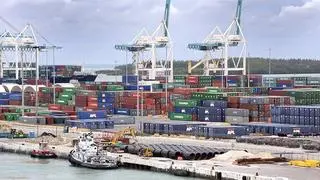FMCG companies may have faced a dismal 2016 due to demand slowdown and demonetisation, but the players are still hopeful of a turaround by the last quarter of FY2017 on the back of revival in rural demand.
There was bad news for the ₹2.56-lakh crore FMCG industry in 2016, which was looking at rural consumption to fuel demand, as the volume growth in urban consumption had slowed down a year ago.
Temporary blip? While demonetisation is being looked upon as a temporary aberration, slowdown in consumer demand is expected to improve in the rural markets, which will be the main trigger for FMCG consumption in 2017.
“The biggest driver for growth in the FMCG industry comes from the rural markets, at almost 70 per cent. Today, however, both rural and urban markets have slowed down between 3-4 per cent,” says Vivek Gambhir, Managing Director of Godrej Consumer Products.
The maker of Cinthol soap and Goodknight household insecticide is hopeful of growth bouncing back for the industry by the fourth quarter of FY2017.
As Gambhir adds: “The FMCG industry has been temporarily derailed but we should see full recovery by the end of the fourth quarter. Despite the rural economy being affected in the past two years, a good harvest, adequate monsoon and government initiatives should see the rural markets become the driver of growth. In our case, we see contribution from the rural markets increase from 28 per cent to 35 per cent of our turnover over the next three years.”
Impact of drought FMCG major Marico, the makers of brands like Parachute and Saffola, which had a muted second quarter, is also expecting to come on track by the second half of the year.
“Value growth has been tepid and there was muted growth in the last quarter. But we should be able to deliver about 10 per cent in growth, and be on track by H2. There has been down-trading in the rural markets with lower consumption in the last two years in the drought-affected States like Maharashtra, Andhra Pradesh, Karnataka and Telangana,’’ Saugata Gupta, Managing Director and Chief Executive Officer of Marico, had said during the Q2 analyst call.
However, the first two quarters in calendar year 2017 will continue to be difficult for the FMCG industry as warned by market research agencies like IMRB.
“In the past two quarters, household consumption in the rural markets has dropped as consumers have pulled back on spending. Volume growth is dropping and this will continue in the next two quarters, which can be attributed to the drought conditions. There is unlikely to be great times ahead for the FMCG industry as discretionary categories like skincare will be impacted due to demonetisation,” said K Ramakrishnan, General Manager and Country Head, (Household panel), IMRB Kantar World Panel.
Where cash crunch struck Currently discretionary categories like skincare, chocolates, aerated drinks continue to be strongly impacted due to demonetisation for FMCG majors like Coca Cola, Pepsico and Mondelez, most of whom have faced de-growth and have been looking at ways to spur growth in their declining categories.
“The Chocolates category had been growing at 10-15 per cent for the past five years, has now dropped to single digits. But being the market leader, we have to create market growth and have decided to strengthen our premium portfolio with differentiated products,” said Prashant Peres, Director, Marketing(Chocolates), Mondelez.
Personal care also hit Demonetisation has also impacted personal care categories in the last two months of 2016.
According to Nielsen, purchase of personal care items such as toilet soaps, toothpaste and shampoo has seen the steepest decline by retailers during the last two months of the year post demonetisation.
The fall in offtake is driven by urban India (-3.1 per cent in November versus October), while rural India has managed to stay flat at 0.4 per cent mainly due to smaller packs, smaller currency transactions and flourishing barter system.
Kaustubh Pawaskar, Senior Research Analyst at Sharekhan, said: “Year 2016 may not have been a great year, but the latter part of 2017 could see the performance of FMCG companies improving on the back of a lag effect on factors like better rabi crop production, sixth pay commission and more money in the hands of the farmer.”
2016 Key Events
Despite a good monsoon, there was no recovery in rural markets as expected, since demonetisation dealt a blow to consumer demand Success of Baba Ramdev’s Patanjali products made other FMCG companies like Colgate, Tata Global Beverages and Dabur enhance their ayurveda portfolio with new offerings
Aerated drinks faced slowdown in growth, with MNC companies like Coca Cola and Pepsico being forced to look at healthier alternatives
2017 Things to watchout for
FMCG companies may invest in nimble start-ups to enter new categories
More products may be launched on e-commerce platforms before being available in brick-and-mortar stores
According to a CII-BCG report on the FMCG sector, e-commerce could contribute as much as 10-15 per cent in sales of some categories by 2025. With services like ‘Amazon Pantry’, which involves the sale of everyday groceries and household products, and with FMCG companies debuting premium products on e-commerce platforms, online channels could become more significant







Comments
Comments have to be in English, and in full sentences. They cannot be abusive or personal. Please abide by our community guidelines for posting your comments.
We have migrated to a new commenting platform. If you are already a registered user of TheHindu Businessline and logged in, you may continue to engage with our articles. If you do not have an account please register and login to post comments. Users can access their older comments by logging into their accounts on Vuukle.